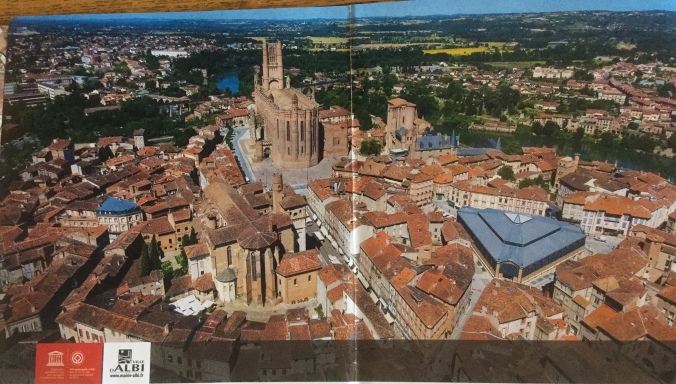
Albi is an UNESCO world heritage city. The old Episcopal City is made of red brick. No limestone is available here for building but there is lots of clay. The Cathedral Sainte-Cécile and Palace were built in the 13th century. The Palace (Berbie Palace) houses the largest collection of paintings by Henri Toulouse-Lautrec. It also has a lovely garden and remarkable formal gardens near the River Tarn.

The bus is parked as close as possible and we walk to the Episcopal City as it is known.




Finally a sunny day and the flowers of spring are in bloom.

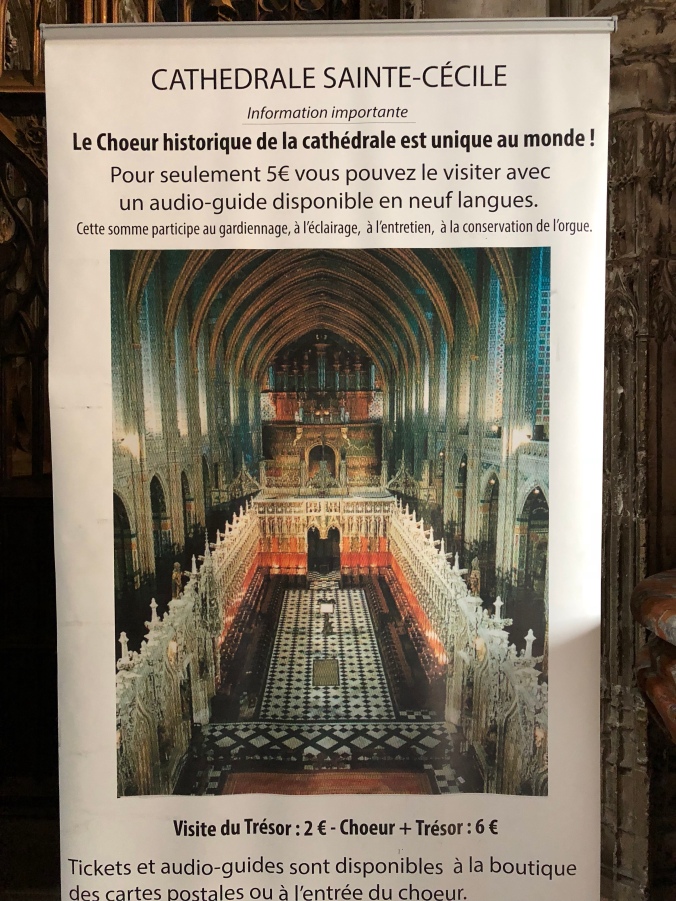
The Cathedral is spectacular. Next door is the Museum. We have an excellent and enthusiastic guide who tells us all about the lordly born Henri whose genetic bone problems limit his size and his ambitions. A series of broken bones with long periods of rehabilitation in bed result in Henri’s taking up drawing and painting to pass the time. He eventually moved to Paris to perfect his craft.
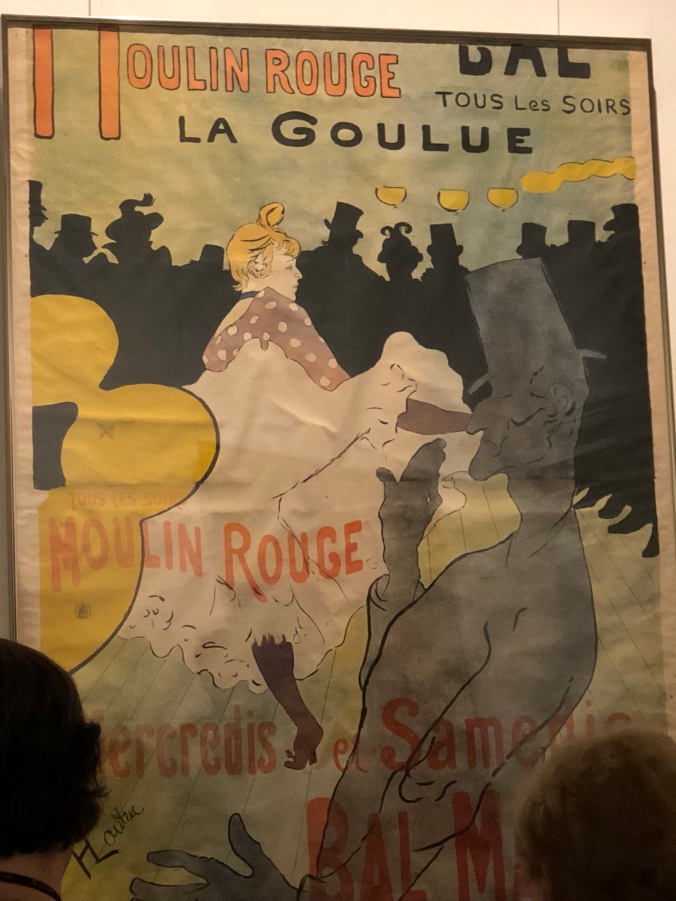

Henri Toulouse-Lautrec is most famous for his advertising art for the Moulin Rouge.
Now we move on to a new region and city.

We arrive in the city of Toulouse and cross the Canal du Midi. Our hotel and the city center are between the canal and the Garonne River.
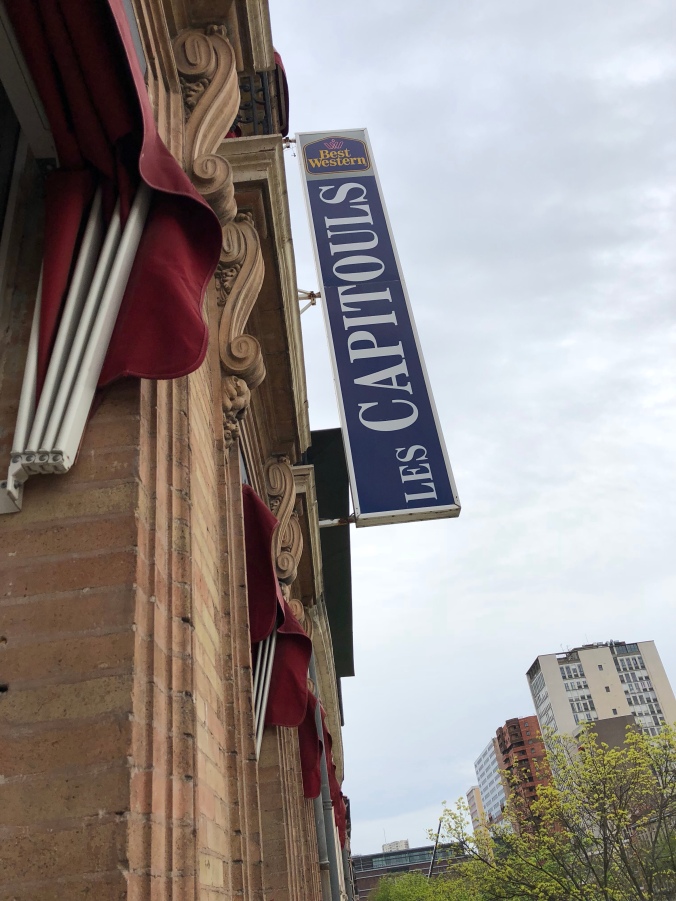

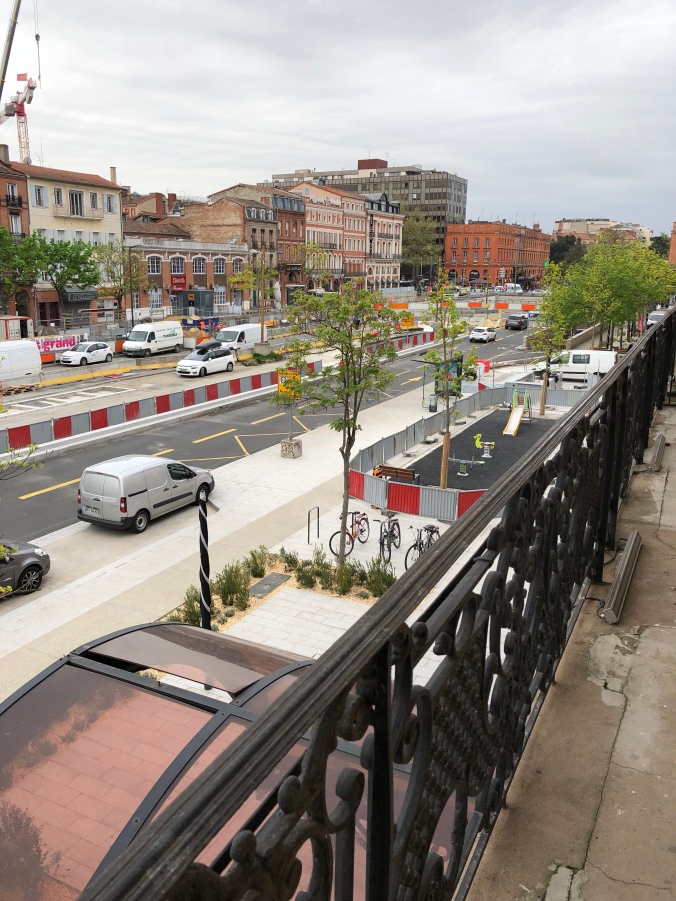
A collection of lamp shades make art in the hotel. Our room looks out onto busy Jean Jaurès street where construction of the subway is taking place.
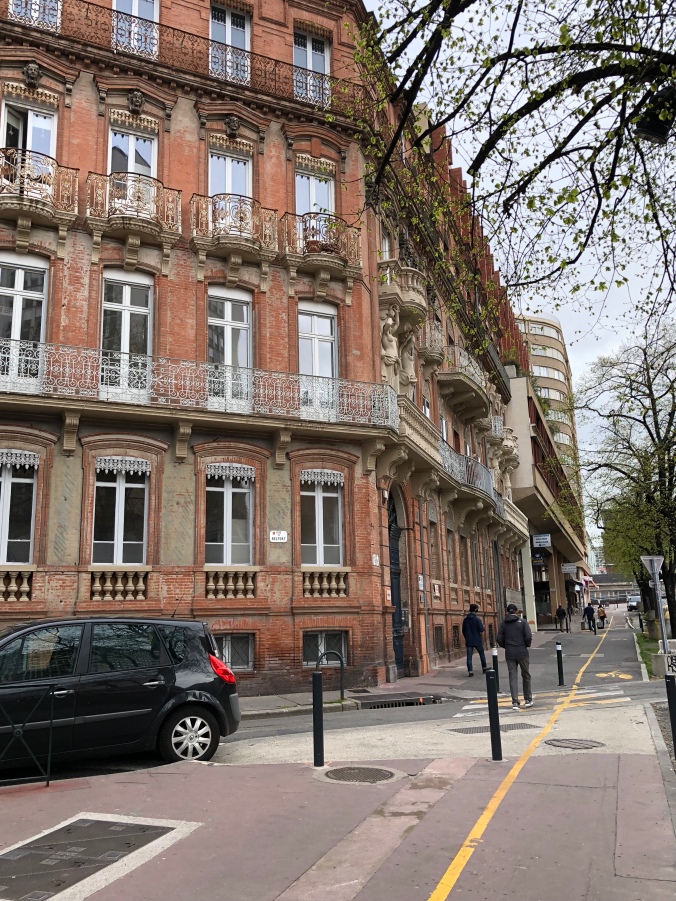
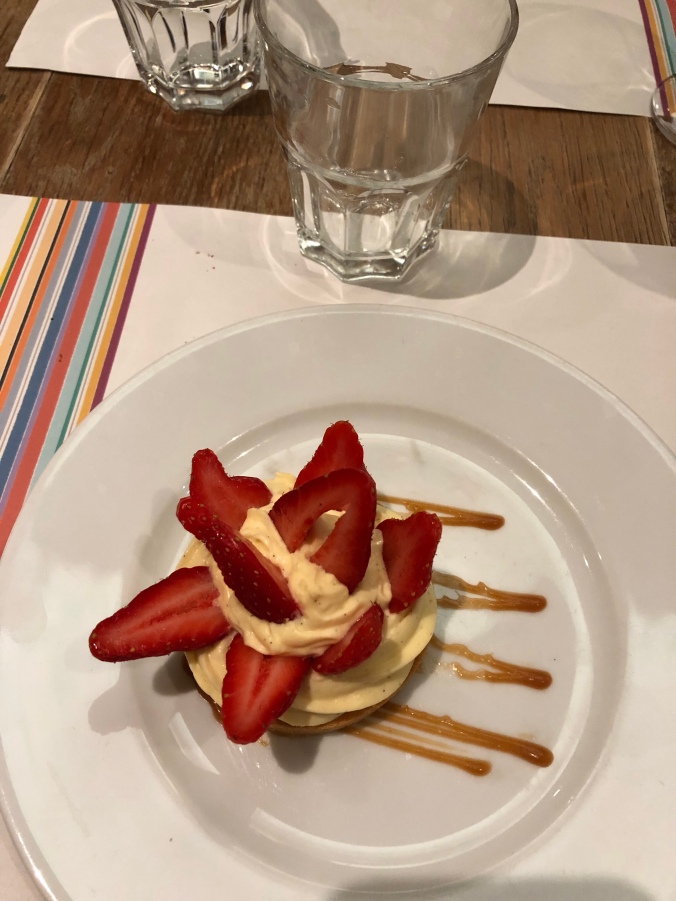
It is a nice evening to walk to dinner. The meat is wild boar and way too much but the custard is nice.
The next day brings a lecture on the Languedoc Region and Occitan People and a tour of the city center, the Saint Semin Basilica (“largest Romanesque church in Western Europe”) and city hall.





In Charles de Gaulle Square our guide stopped to show us the plant that caused Toulouse to be an economic powerhouse in ancient times.

This unassuming plant with bluish leaves is woad, in English, pastel in French. The leaves produce a dye of a lovely blue color which was once very prized. It was exported all over the world until indigo was discovered. The woad market crashed. Indigo was cheaper to produce and export and made a brilliant blue dye. We found a shop that had products dyed with woad which were very expensive, but a lovely soft blue.

This is an example of the blue color. Handmade dyed paper stitched onto a wall hanging.
The city hall is expansive with paintings on the walls. The building is used for many formal functions.
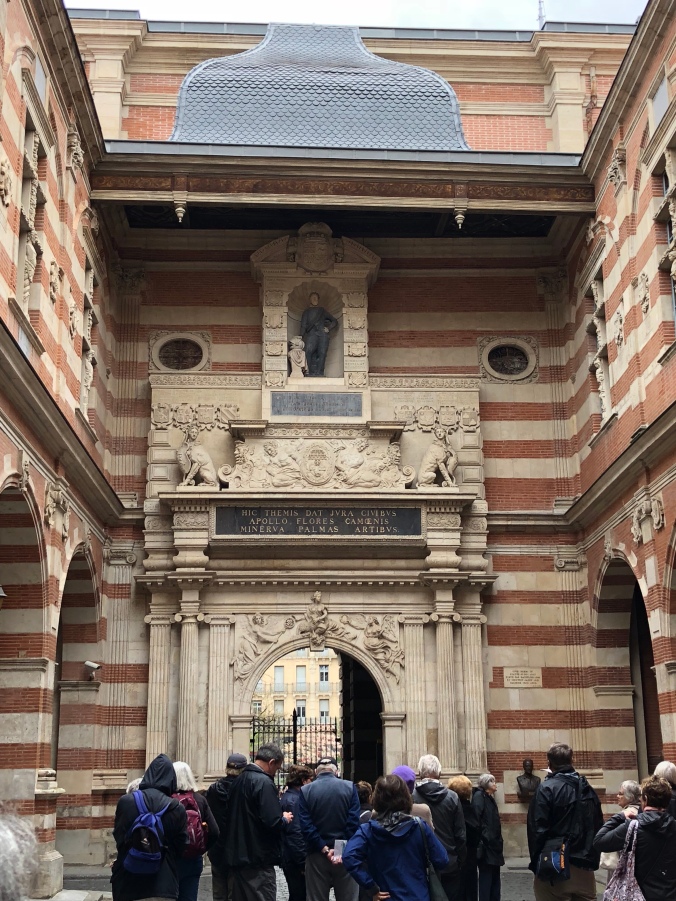


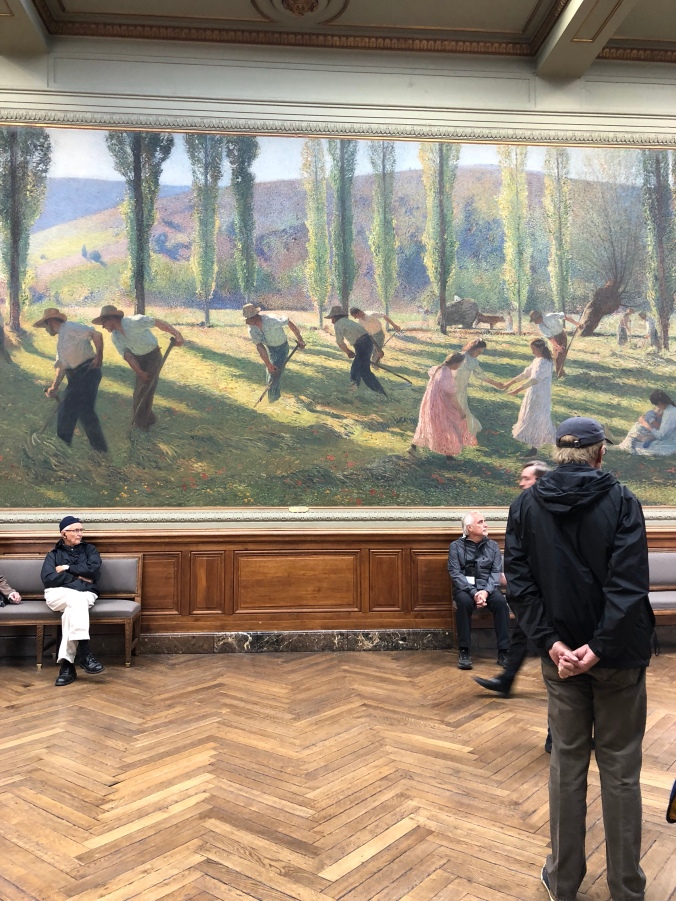

We all seemed to be a bit tired of standing around at this point.

Back to Charles de Gaulle Square. We walked past a gallery on the square that has modern art on the ceilings.
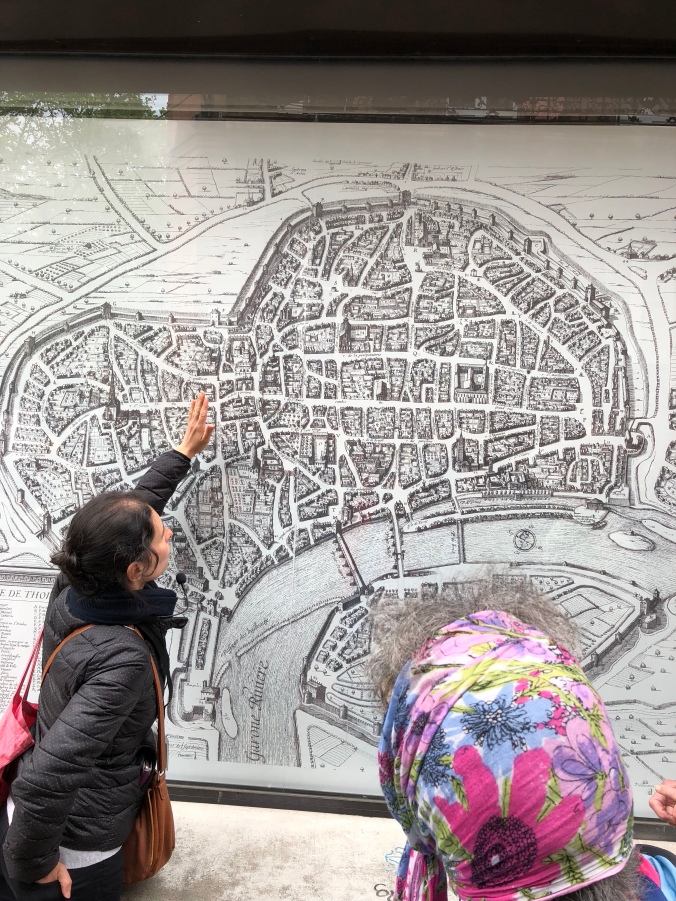
Our guide points out a map of the ancient walled city.
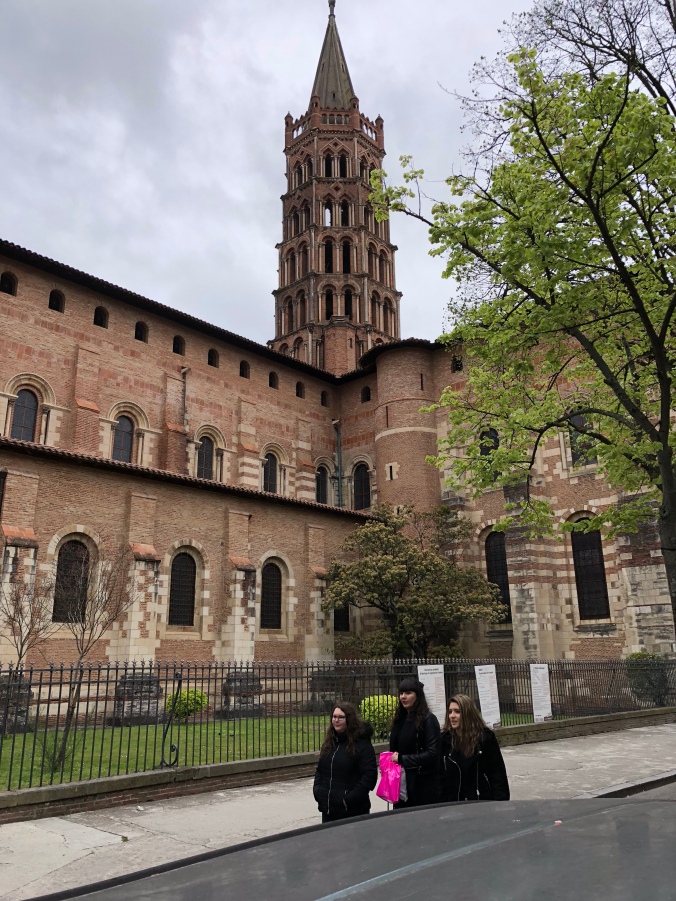

The Basilica.
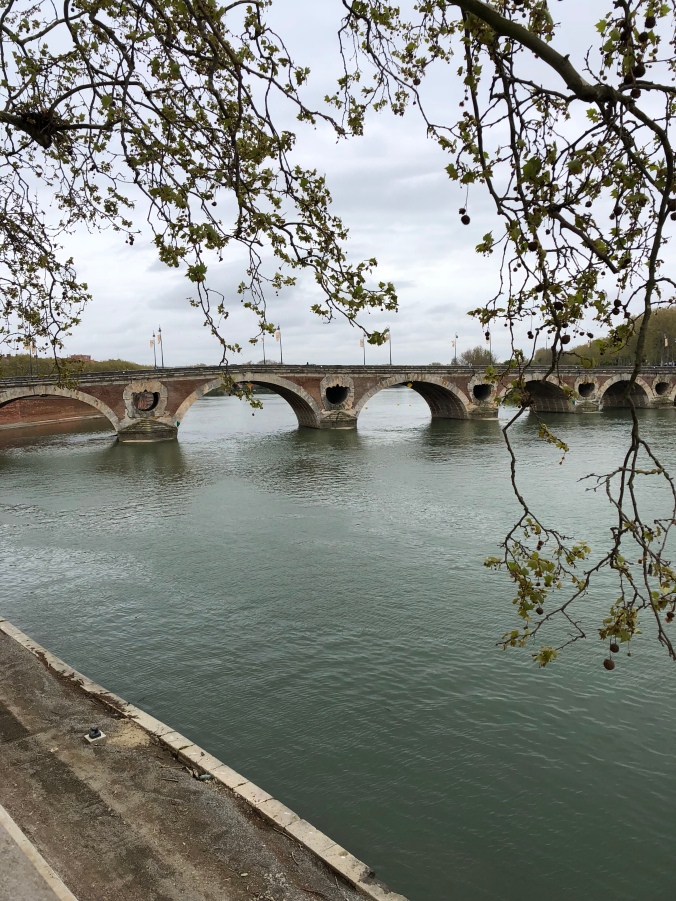
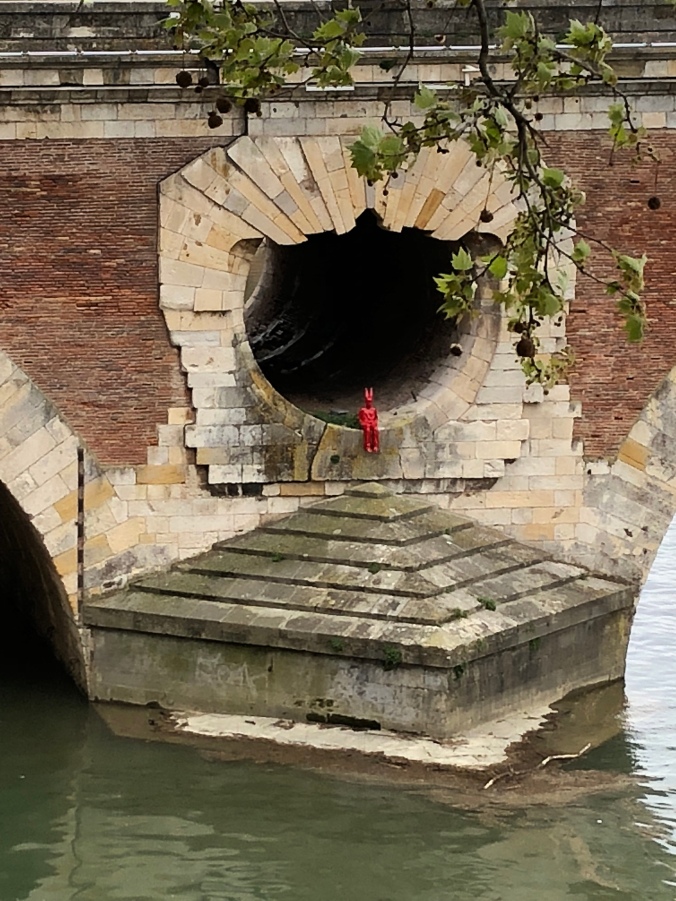
The Garonne River and Pont Neuf Bridge. An impish red statue provides contrast. Back across town and to the hotel for rest and dinner on our own.



A group of us walked to this restaurant for a tasty meal. Tomorrow is the last day of the tour. We hear that Air France is having a strike the day we will leave. Many of us are flying on that carrier so we are unsure if our flights will be affected.

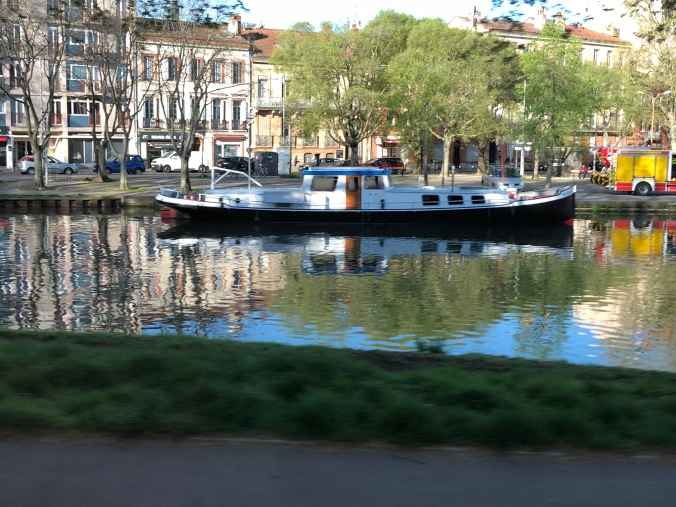

Out of town past fields to a higher altitude and closer to the Mediterranean and Spain. The Pyrenees Mountains are white in the distance. We are headed for the Medieval city of Carcassonne which has a 2,500 year history of occupation.



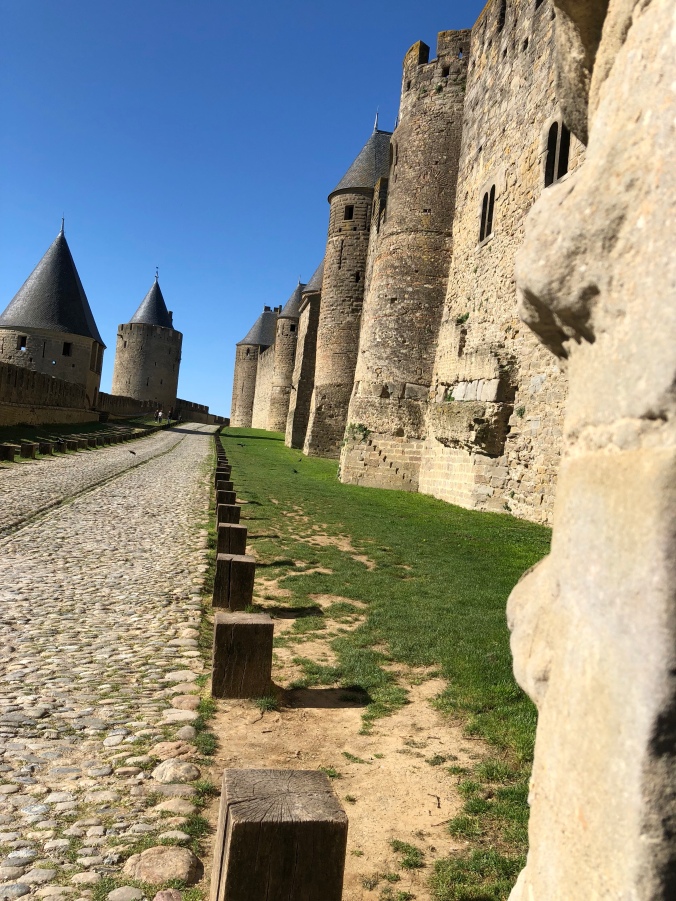
Despite the fortifications, Gallo Roman walls couldn’t hold out against the Visigoths, Saracens and Franks who occupied the city. Then in the 12th century, Pope Innocent III launched a crusade against Cathar heretics. The fort was again besieged since the owner protected the Cathars. The fortification crumbled in disrepair until the 19th century when Viollet-le-Duc, an architect, restored the city fortifications. It became an UNESCO site in 1997 and is a popular tourist attraction.

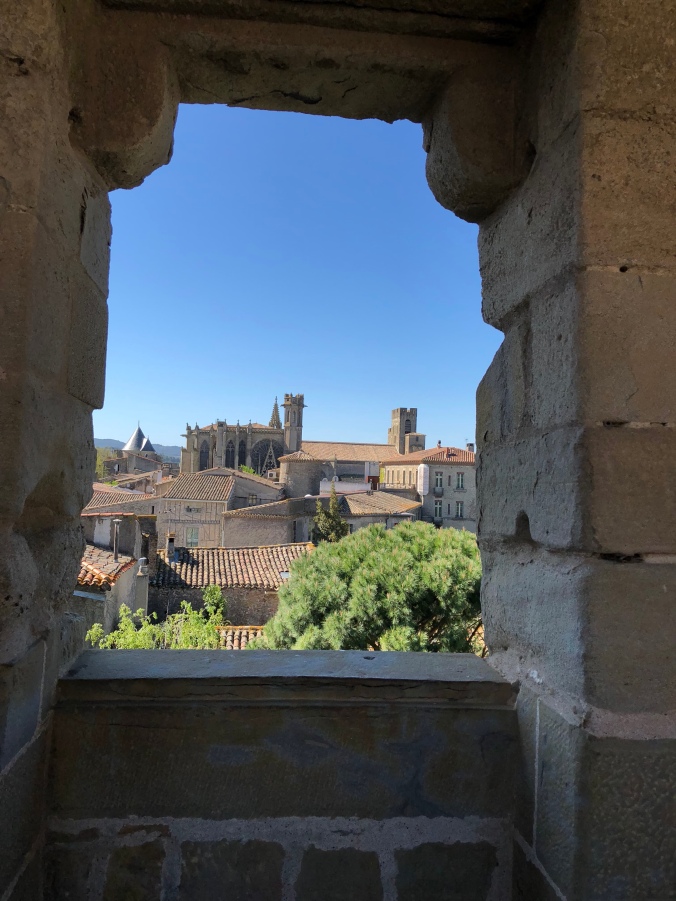

I didn’t make completely around the walls but did visit the Basilica.



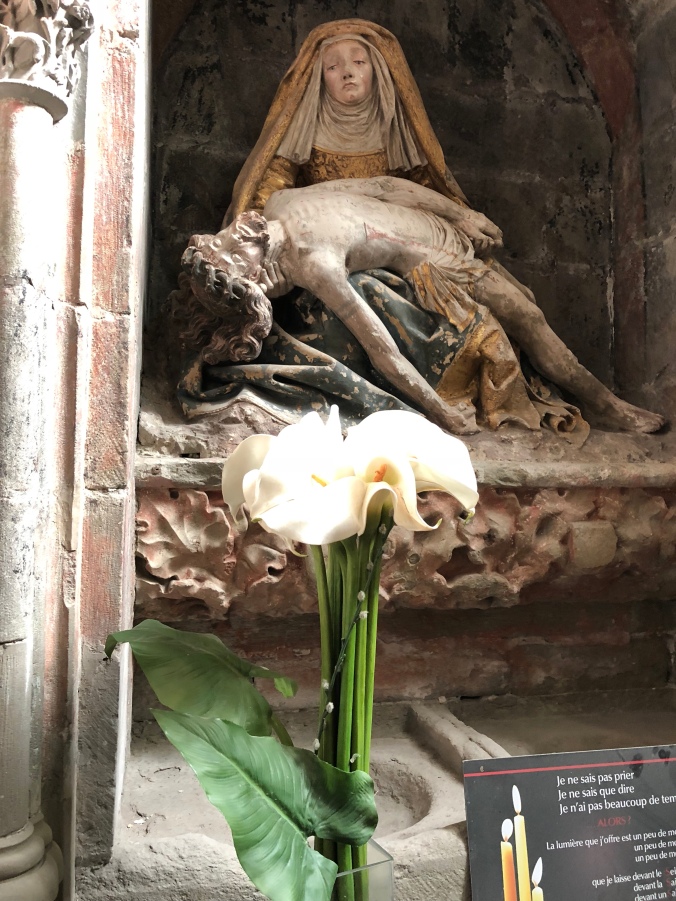
Lunch will be a local specialty, Cassoulet. Some of us sit in the square to wait for the rest of the group. Buskers sing and play for coins.
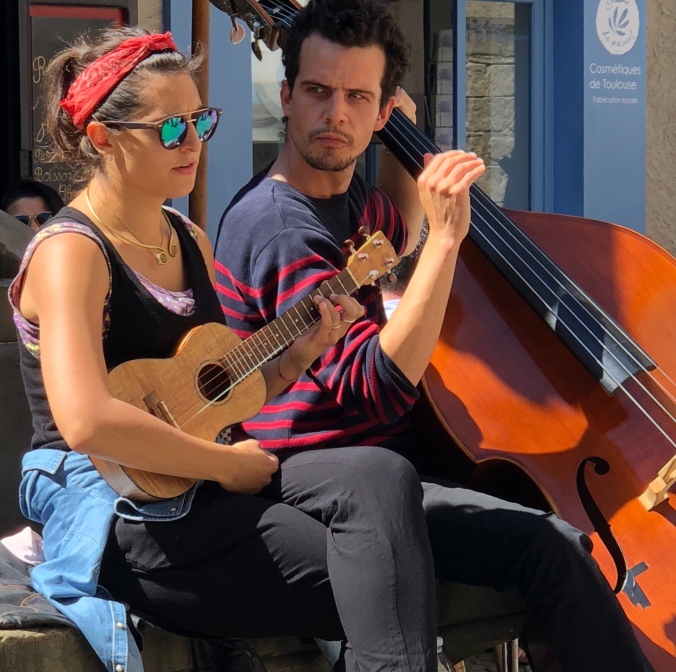
The meal starts with another French mainstay, warm goat cheese on greens.
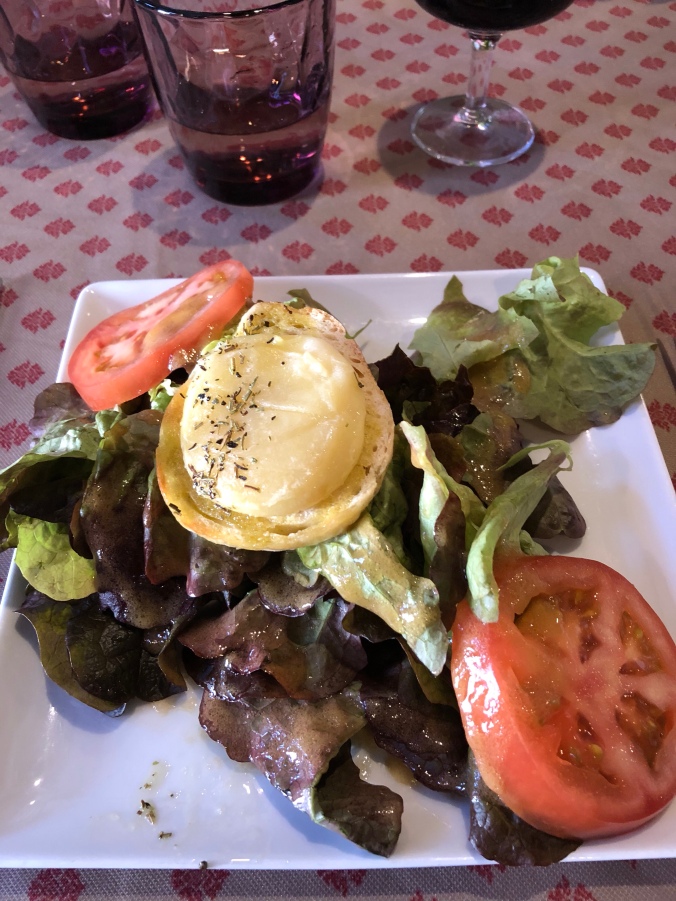
The cassoulet is served in casserole dishes. White beans, duck legs and duck sausage cooked low and slow. Delicious!


Back to the bus and back to Toulouse for some free time. We try to find out about our flight, cancelled. Calls to Road Scholar travel service have to wait until morning comes in the States but there is an emergency number which is answered. They will work on getting our flights rescheduled. Others are having similar experiences.
We gather in the lounge for a glass of Champagne before going to dinner. Alice has a poem she wrote and Dave has a song.

Dinner was in a lovely restaurant, Les Beaux-Arts Brasserie Flo, on the bank of the river near the Pont Neuf bridge.

Our entree of salmon was presented with sea foam.

After another excellent gourmet meal, our Road Scholar Tour is done.

Goodbyes are said and hugs are given at the hotel. Looks like Dave and I will be staying two more days in Toulouse!
Paris architecture is so beautiful, but wouldn’t want to live there as we had a couple of unsettling experiences there. Did you happen to visit one of the French toilets on the streets…..you know the ones that automatically scrub the whole thing down after you do your business? I think it was on an 8 minute cycle, so it took forever for our group to cycle through!
LikeLike
We did use one of those in Bordeaux. I couldn’t imagine why more people weren’t using this little house until I realized what a process it was. Fortunately, only Dave and myself were using it.
LikeLike